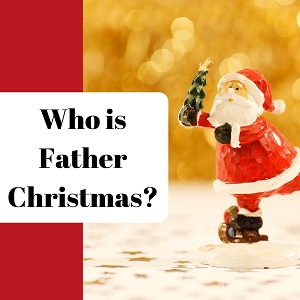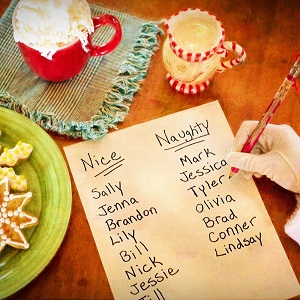The History of Santa
Christmas wouldn’t be Christmas without a pretty decorated tree full of baubles and tinsel, pulling Christmas crackers, sending some Christmas Cards, presents, eating turkey and Christmas pudding or thinking about snow, robins and, of course, a visit from Santa Claus. Yet none of this might have come about if it wasn’t for the Victorians.
The nineteenth century was the era when Christmas really took off as a massive festival containing all the ingredients we know and love today. It was a century when Christmas was totally transformed into a present giving, family orientated celebration in which Santa Claus played a major role.
Before 1800, Christmas had been primarily a midwinter celebration focusing on church services, decking out buildings in evergreens such as holly and ivy and having a nice meal. Most people did not have a holiday at Christmas.
With the arrival of Queen Victoria on the throne, it soon began to change. Her new husband, Prince Albert introduced the decorated Christmas tree, based on Germanic tradition. Just over five years later, Charles Dickens wrote his immortal story “A Christmas Carol” portraying the different attitudes towards Christmas from Scrooge’s Humbug and refusal to celebrate set against the Scratchit family’s determination to celebrate even with little money to spend. It even included one of the first images of a Santa Claus type character – The Ghost of Christmas Present.
Although turkey had been a frequent part of the Christmas meal since the late sixteenth century, but it was not until the nineteenth century that it really became fashionable, partly as a result of the stories by Charles Dickens. Carols too had long been part of the Christmas midwinter tradition, but it was during the Victorian period that the first collection of Christmas Carols was published in 1833. As years progressed, many more were written destined to become familiar favourites such as In the Bleak Mid Winter, O Little Town of Bethlehem, We Three Kings of Orient Are and the ever popular Jingle Bells.
Traditional evergreens were supplemented with hand made paper decorations, and it become increasingly common to send friends and relatives Christmas wishes. Henry Cole devised the first Christmas cards showing a group of people around a dinner table in 1843, and quickly gained popularity. By 1880 over 11.5m Christmas cards wee being sent. Robins, snow, churches, animals and horse drawn carriages frequently appeared on the cards.
Christmas Crackers
It was 1848 when Christmas Crackers first made their appearance. London based baker and confectioner Tom Smith set up shop in Clerkenwell. Having discovered the French bonbon wrapped in a twist of tissue paper, he added a motto and perfected the cracker concept to give it a ‘pop’ when pulled.
Other familiar elements followed quickly. Industrialisation meant inexpensive children’s toys could be mass produced, alongside the idea of giving little gifts at Christmas. Christmas stockings were hung up by the fireplace to be filled secretly overnight by a red costumed Santa Claus, as the story of St Nicholas and his reindeer transferred across from America taking over from the green dressed Father Christmas. Even poor children often had a stocking containing a few pieces of fruit and nuts.
As the twentieth century dawned, virtually all the elements of Christmas as we know it today had arrived. People even had time off at Christmas – the idea of an official paid holiday on Christmas Day and Boxing Day had become the norm. Christmas had become an institution, something to which everyone looked forward while for children, one person above all had come to dominate the festival – Santa Claus, dressed in his red outfit, black boots and with a big bushy white beard.
Christmas was here to stay!



